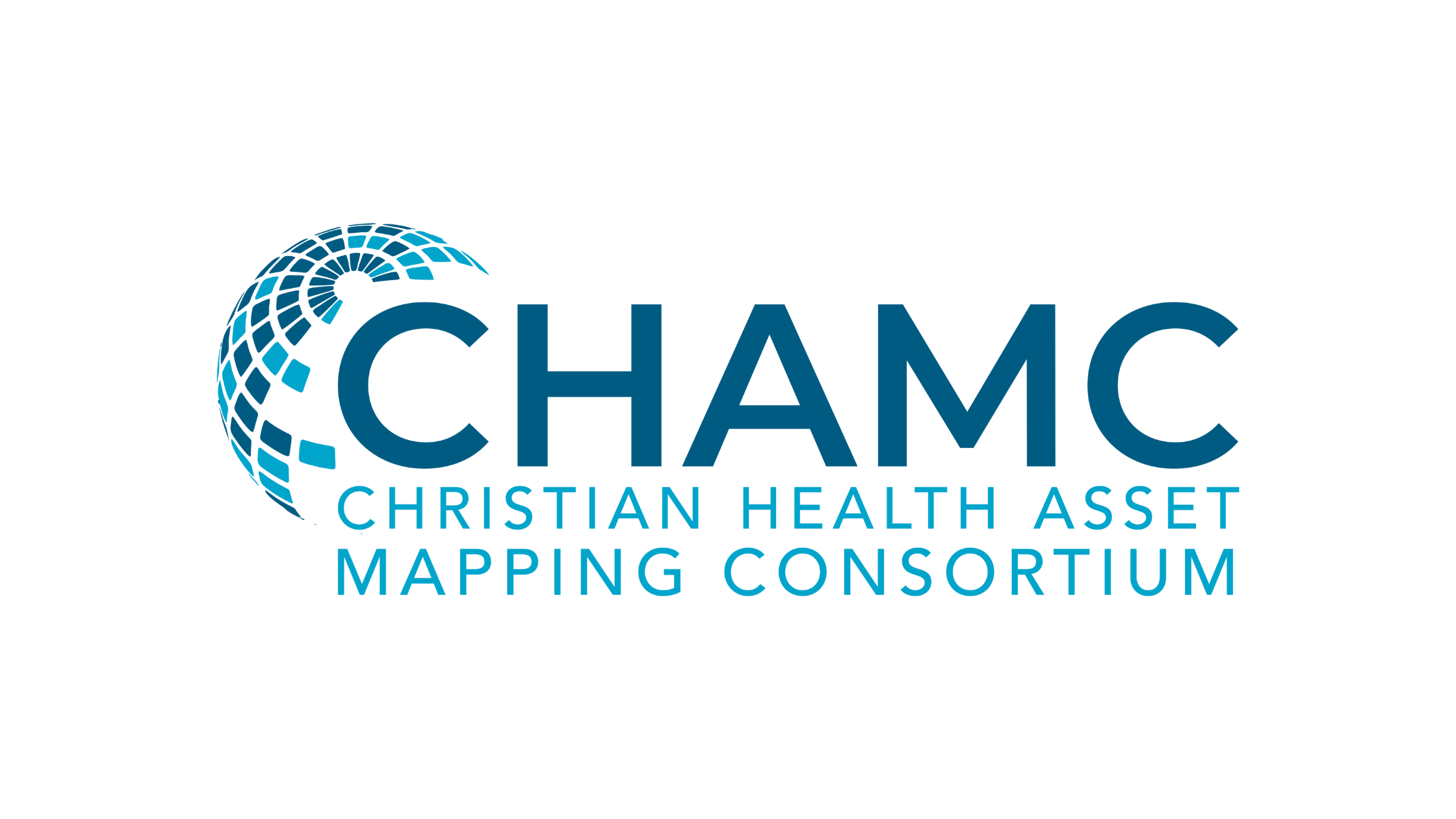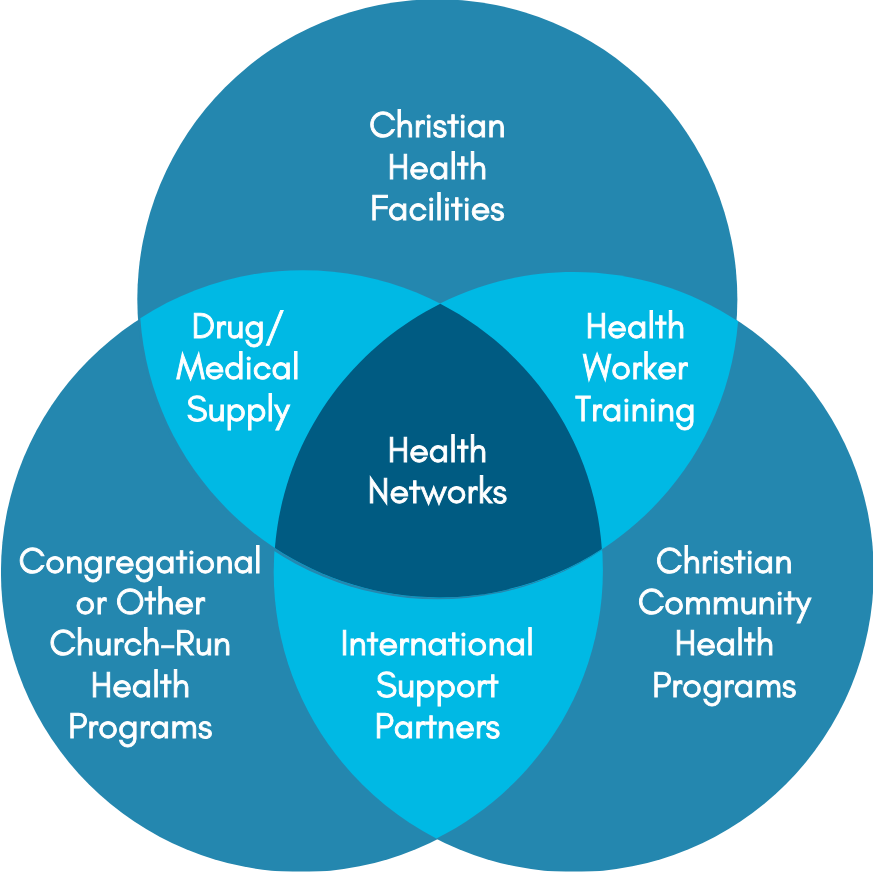The CCIH Approach to Data & Mapping
CCIH is committed to raising evidence about the scope, scale, and impact of faith-based health services and faith actors who work alongside governments and other institutions to improve health for those in greatest need.
There are two key ways CCIH is supporting this now:
- Serving as founder and secretariat for the Christian Health Asset Mapping Consortium (CHAMC)
- Advancing a typology of faith engagement developed with USAID that can foster a common language and provide better data on the work faith-based organizations do.
Learn more about both of these initiatives below.

About CHAMC
The Christian Health Asset Mapping Consortium (CHAMC) is a coalition of organizations formed to address the urgent need for quality data and information on the Christian health asset landscape in low- and middle-income countries.
Established in 2022, CHAMC founding members include:
- Africa Christian Health Associations Platform (ACHAP)
- Catholic Health Association (US) International Outreach (CHA-US)
- Christian Connections for International Health (CCIH)
- International Christian Medical and Dental Association (ICMDA)
- The Dalton Foundation
- World Council of Churches (WCC)
CCIH serves as the secretariat for the Consortium.
Why is this important?
A lack of data about the Christian health asset landscape leads to undercounting of these assets and exclusion of faith-based organizations from planning, partnerships, and research. To better understand the landscape, CHAMC identified different types of health assets and is working to foster data and learn about each one. These assets include organizations that directly serve populations and also organizations that train or support organizations and programs that directly serve populations.
See the Venn diagram below for a clearer picture of this landscape.

What is the Hub?
CHAMC developed a hub that serves as a “registry” or “database of databases.” The hub is not a giant warehouse of all global health service data, rather it is a collection of datasets. It enables CHAMC partners and other faith actors to provide information about health asset datasets in a structured, secure, and consistent format. Visit the CHAMC Hub
Faith Engagement Typology
Faith Engagement Typology
The second part of CCIH’s approach to Data and Mapping is the development of a Faith Engagement Typology. CCIH led the development of this typology as part of its work as the Faith Engagement Team for USAID’s MOMENTUM Country and Global Leadership. The typology helps consistently quantify and describe faith-based efforts to improve health outcomes.
What Is MOMENTUM?
USAID’s MOMENTUM project enabled government-led partnerships to deliver high-quality, evidence-based interventions that accelerate reductions in maternal, newborn, and child mortality and morbidity at scale.
CCIH supported MOMENTUM’s engagement with faith-based organizations (FBOs) and faith communities and aims to expand the evidence base on the involvement of faith or religious institutions in health development work.
Realizing that donors and partners lack a consistent way to describe how and why faith engagement strengthens global health initiatives, CCIH developed a faith engagement typology. The identified typologies are commonly observed in faith engagement but are not exclusive to faith-based entities or environments. These typologies will help global partners understand and describe the type of faith engagement work done through MOMENTUM and beyond.
A typology is important to guide health planning and investment in a world where most of the population belongs to a faith group that directly or indirectly influences health.
FBOs are often the first to respond to emergencies and are still there long after the emergency has subsided. Faith actors can make or break a global health strategy; excluding them from planning and resources fosters distrust and may even leave people in communities believing “health” and “faith” are at odds. Strategic investments in faith engagement prevent that and may help accelerate programs to scale.
This typology was developed based on a learning process with input from MAKLab, a service under the MOMENTUM Knowledge Accelerator. MAKLab, including colleagues at Ariadne Labs, completed a literature review and reviewed the typology for fit against available literature. This typology was tested using data from 25 USAID-funded programs under MOMENTUM Country and Global Leadership. The current typology may adapt with continued learning and testing; therefore, we refer to this as version 1.1.
| Faith Engagement Typologies, version 1.1 |
|---|
| 1. Create space for discussion of theological interpretations in health ethics and actions a. Promote understanding and dialogue on the role of theology and ethics in health b. Incorporate prayer and spiritual practices (e.g. Chaplaincy) |
| 2. Increase just and equitable access for underserved populations a. Develop disease-specific programs b. Distribute services to underserved geographies c. Ensure access for underserved population/demographic groups |
| 3. Provide a range of health-related services in faith-based environments a. Provide community-based health promotion and care b. Provide facility-based health services c. Provide health programs at places of worship/prayer (activities, teaching, services) d. Provide multi-sectoral or wrap-around services (livelihoods, nutrition, education) |
| 4. Commit to program sustainability a. Commit to long-term service beyond program lifecycles b. Provide organization capacity development opportunities |
| 5. Respond quickly in times of crisis or difficulty a. Provide services in humanitarian settings b. Solicit or deploy volunteers and product donations |
| 6. Shift power to local actors a. Advocate for local priorities in public policy and planning b. Ensure the active participation and involvement of local faith actors in decision-making |
| 7. Increase the quantity and technical rigor of faith actors and engagements a. Provide health worker training and mentorship b. Integrate mental, social, spiritual and/or physical health |
| 8. Build awareness and community sensitization a. Facilitating open conversations and fostering acceptance within communities b. Dismantle stigma and discrimination that marginalize individuals and communities |
| 9. Influence social and behavior change for positive health a. Support health-promoting behavior change, positive community attitudes, beliefs, and practices b. Promote peace-building among people and communities c. Support freedom of religion and religious expression |
| 10. Foster community health systems and networks a. Strengthen networks of health facilities and community health providers b. Promote referral networks c. Promote resiliency and planning for emergencies d. Promote shared learning across network/institutions |
